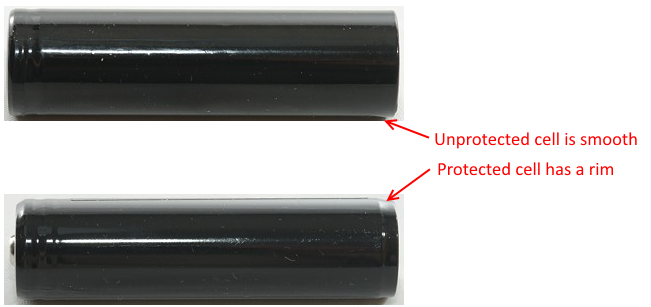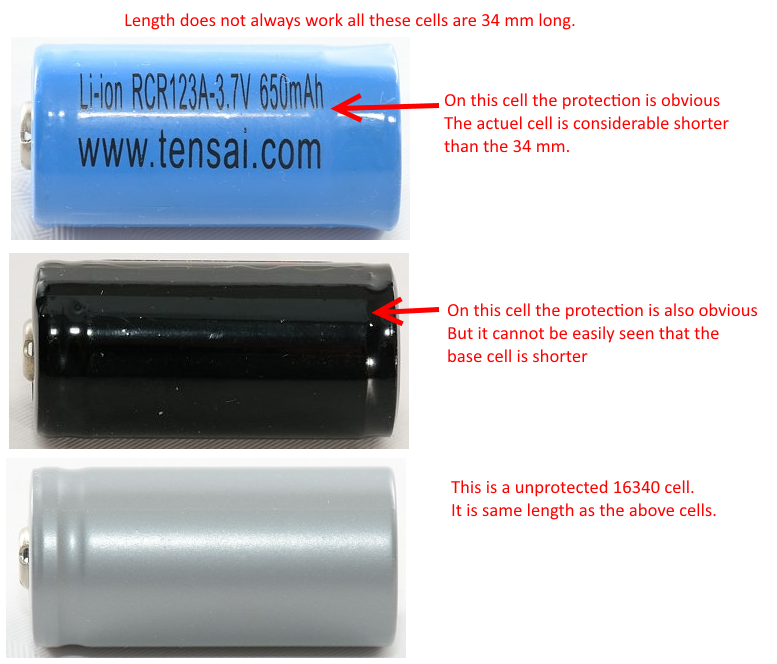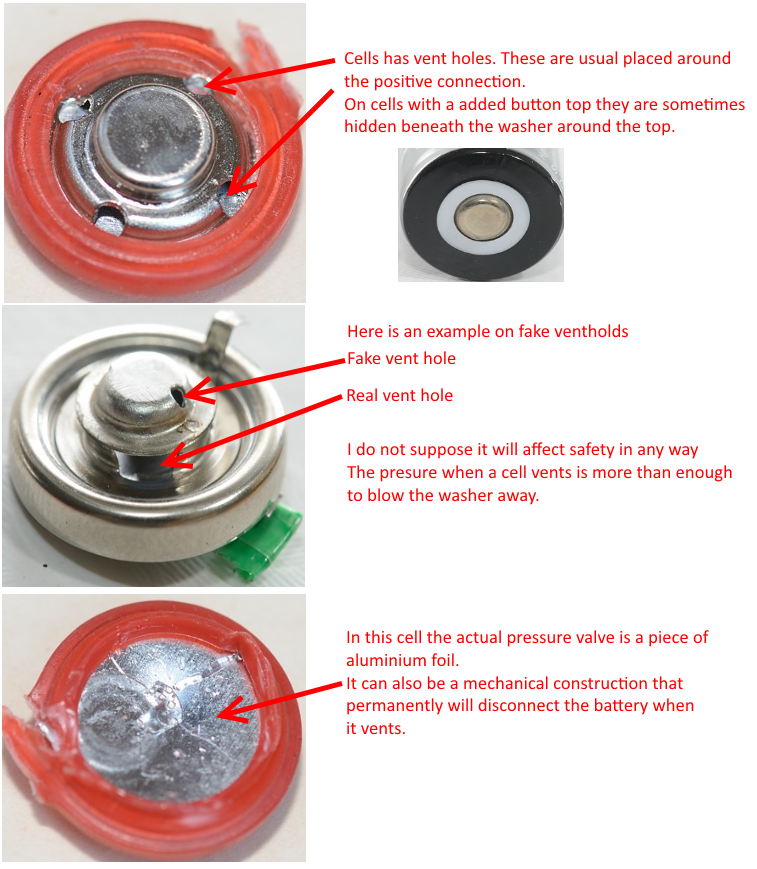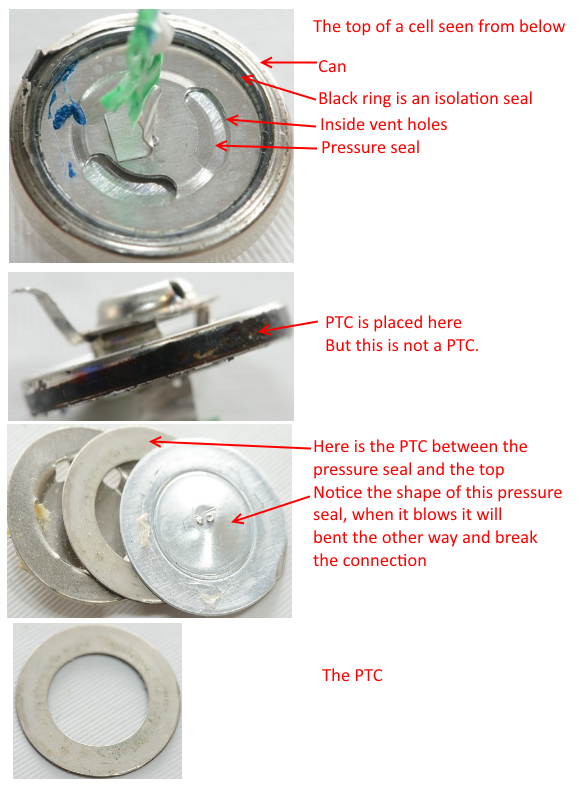Is my battery protected?

Not all batteries are protected and unprotected batteries will be damaged if discharged too much.
There is a couple of ways to see if a cell has protection:

Most protections are placed at the bottom of the cell as is fairly easy to see.

Due to the protection the bottom of the cell may also look different.

When the protection is place at the bottom of the cell it always needs a connection to the top.

The length always works for 18xxx cells, also if the protection is in the front part of the cell.

With 16340 cells the length may not work always as indicator of protection or not.

The front of a front protected cell looks slightly different.
Is a unprotected cell really unprotected?
When the protection circuit is missing, will the cell just exploded when mistreated?
The answer is, of course, no, but it can easily be damaged beyond repair. The build in protection is there to prevent fire and explosions, not to prevent damage to the cell.
A cell can have two protections inside the can:

One is a pressure valve that will usual disconnect the battery permanently when it vents. This is often called a CID (Current Interrupt Device).
When a cell vents it will be with a rather high pressure that may blow the front and back of a flashlight. This is not a fault, but the last safety measure to prevent that the cell explodes.

The second protection is a PTC, this is a temperature sensitive resistor. It will have a very low resistance at normal temperature, but at a certain temperature the resistance will increase dramatically and reduce the current flow.
A PTC will reset itself when it cools down, this may degrade the cells performance.
In some modern cells this function is supplemented or replaced by HRL (Heat Resistive Layer) that will disable the battery if it gets to hot.
The PTC may not be present in high current cells and it may also be missing in cheap cells.
Notes
How is a protected LiIon battery constructed
Disassembly of cheap 18650 battery
Great info, thanks for all your efforts here! H)
Thanks for the info mate! ![]()
Thanks for the effort HKJ. Very informative.
Good Day HKJ, 
Valuable info....
Thank You Very Much,
George
Thanks HKJ
I don’t remember seeing any cells with the protection at the positive end.
I wonder which cells have PTC or HRL.
Good to know that my pink unprotected Samsung ICR18650s have the vents.
Thanks HKJ , Good post !
Highly appreciated! ![]()
Awesome HKJ…thanks!
will the CID or PTC be affected when the top of the cell gets dented in by the flashlight which happens on most flashlights over time
I cant remember how many times people have asked how they can identify protected cells. Thanks for the great tutorial!
That will depend on the exact construction, but probably not.
excellent, thanks
I cant remember how many times people have asked how they can identify protected cells.
That is exactly the reason I decided to do this article, now anybody can give a good answer with just one link.
I tried to keep it simple, but I did get technical in the last part. I wanted to include some information about what unprotected cells was (I did have to open a few old cheap cells to find one with a PTC).
Thanks HKJ,Great.
Excellent information here! Sticky’d. Thanks a lot for putting this together.
Very useful . Thanks! :bigsmile:
Welcome to the Forum! ![]()
:bigsmile: Thanks
Great post wiyh many informations !! Many thanks !